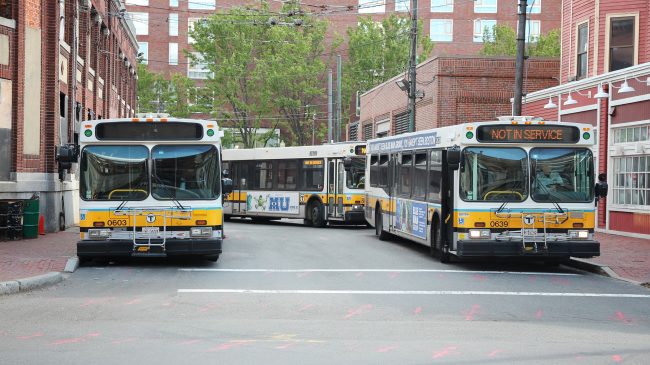Transportation is important for jobs and economic development. At an individual level, access to transportation helps people travel to their jobs. At a community level, greater access to transportation stimulates productivity and trade, which leads to economic growth.
Unfortunately, people and communities face the barrier of old-fashioned urban planning when they try to access economic opportunities. Urban planning for transit in the early to mid-1900s was typically designed to transport residents to their jobs, which were usually in a city’s central business district.
However, today’s major metropolitan areas often have multiple job centers, with more than 50 percent of jobs being located 10 miles or more from the city’s central business district. This means that many commuters travel from suburb to suburb—from their residential suburb to another suburb where their job is. For example, 59 percent of the commutes in the Washington D.C. metro area are from suburb to suburb. This travel pattern makes the centralized rail transit systems inconvenient for most commuters. Thus, in many American metropolitan areas, old centralized transit systems fail to serve contemporary, decentralized demand patterns.
The issue, then, is how to increase the supply of transportation in the areas with the highest demand. When confronted with this problem, policymakers often think in terms of a false choice: They feel they must either choose transit or highway improvements. Fortunately, two effective solutions to this false dilemma are (1) managed lanes and (2) bus rapid transit (BRT).
Managed lanes use variable pricing to reduce traffic congestion. Variable pricing charges for access to a managed lane. The prices of using the lane rise during rush-hours and times when demand is high and the prices are reduced at off-peak hours and when demand is low. The prices are set at levels designed to maintain maximum person throughput. For example, high occupancy toll (HOT) lane prices can vary from $.01 per mile during the lowest-demand times of day to $1.00 per mile during the busiest travel times. Thus, managed lanes leverage market forces (i.e. prices set by demand) to reduce traffic congestion, increasing efficiency, and economic productivity.
These types of tolled managed lanes have already delivered positive outcomes by increasing both resources for transportation infrastructure and transit effectiveness in 11 states. As revenue from gasoline taxes fall, managed lane tolls provide a valuable alternative source of revenue to build and maintain that infrastructure. For instance, managed lanes are providing 73 percent and 79 percent of the revenue needed to build the I-495 Capital Beltway in Virginia and the North Tarrant Express Managed Lanes in Texas respectively.
Managed lanes also complement bus rapid transit (BRT). Commuters are more likely to choose BRT when it can provide faster travel times. BRT uses managed lanes, which are designed to always be moving at the speed limit, so it can offer more reliable travel times and is more likely to arrive on time than buses using congested general purpose lanes. For example, the managed lanes on I-95 in Miami-Dade County have contributed to a 400 percent increase in bus ridership.
By both boosting transit efficiency and proving a funding source for highway improvements and maintenance, managed lanes highlight the misconceptions assumed by many policymakers. BRT’s attractiveness as a policy solution derives from five key features that make it more efficient and user-friendly than regular buses:
- BRT receives priority on running ways and traffic signals can use technology to give BRT vehicles priority at intersections, making it faster than normal buses.
- Consumers have a better user experience because BRT uses high-quality and often custom-built stations.
- BRT is more effective than normal buses at transporting large volumes of passengers due to larger capacity vehicles (usually 60 seats).
- Unlike old-fashioned buses, BRT leverages technology to speed up collecting fares from passengers.
- Finally, BRT service has lower headways (time between vehicles, often every 10 minutes) than normal buses.
Some proponents of increased transit accessibility argue that rail is the best option, but BRT offers an affordable, flexible alternative to rail. The median cost of rail projects ($575.7 million) is approximately 15 times higher than the median cost of BRT projects ($36.1 million). BRT costs vastly less and offers tremendous adaptability that rail cannot. If major residential or employment locations change, a transit system using buses is flexible enough to alter its lines to best serve those major changes and adjust in ways that rail can’t.
Managed lanes and bus rapid transit are affordable and adaptable transportation modes that can help the U.S. move into a more prosperous future.

